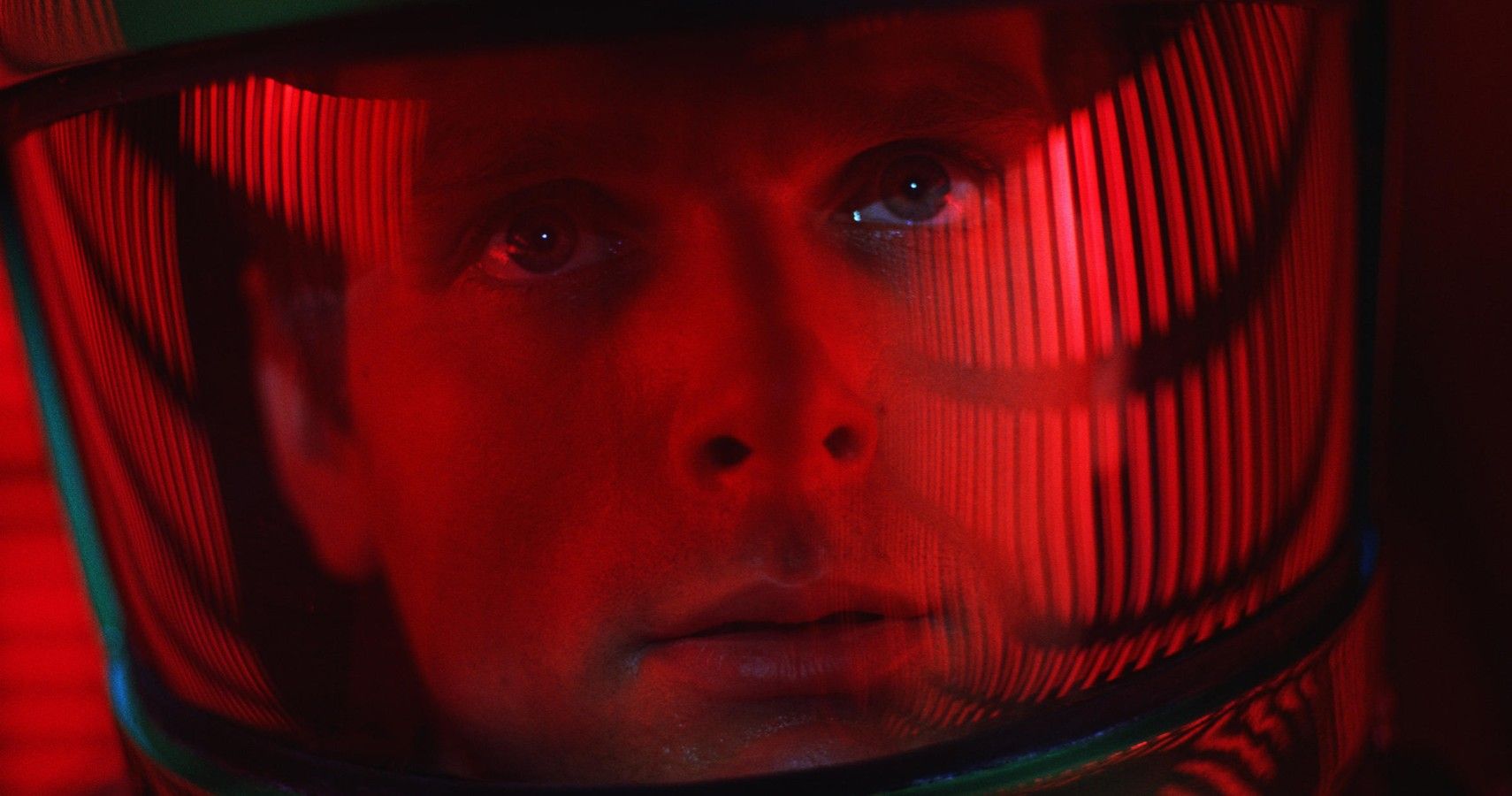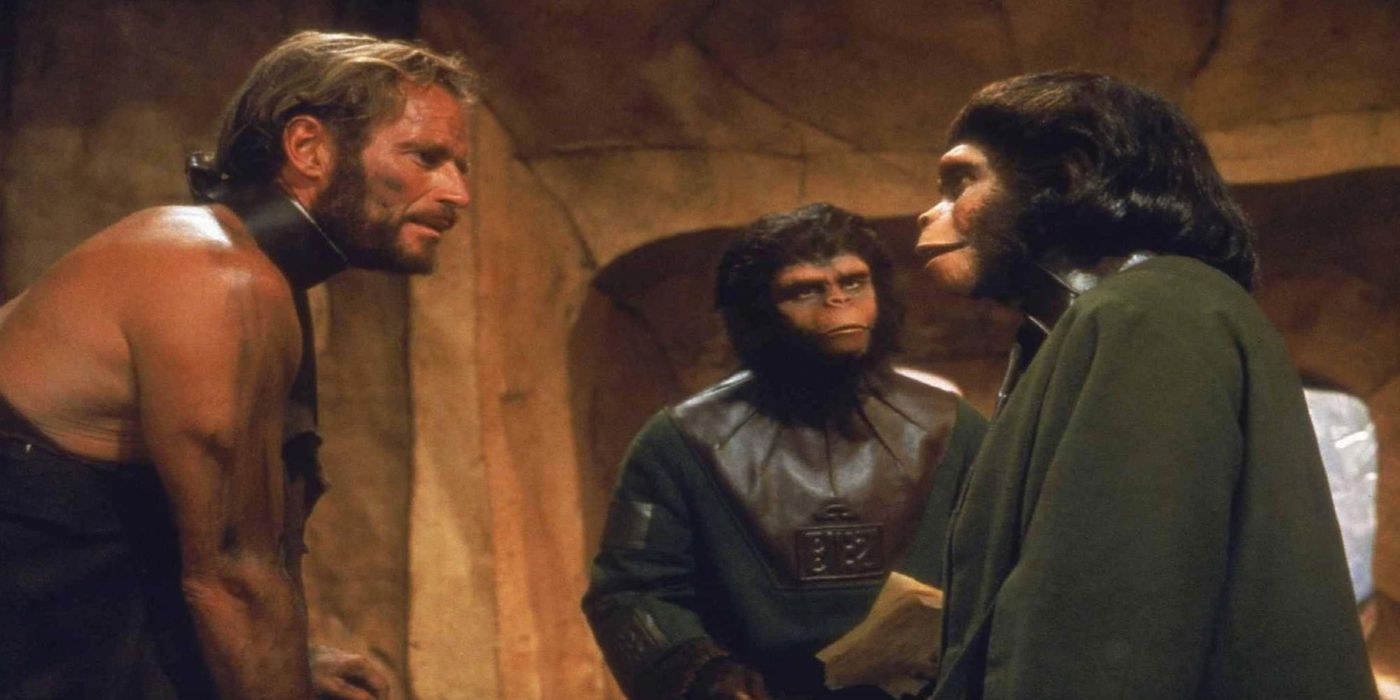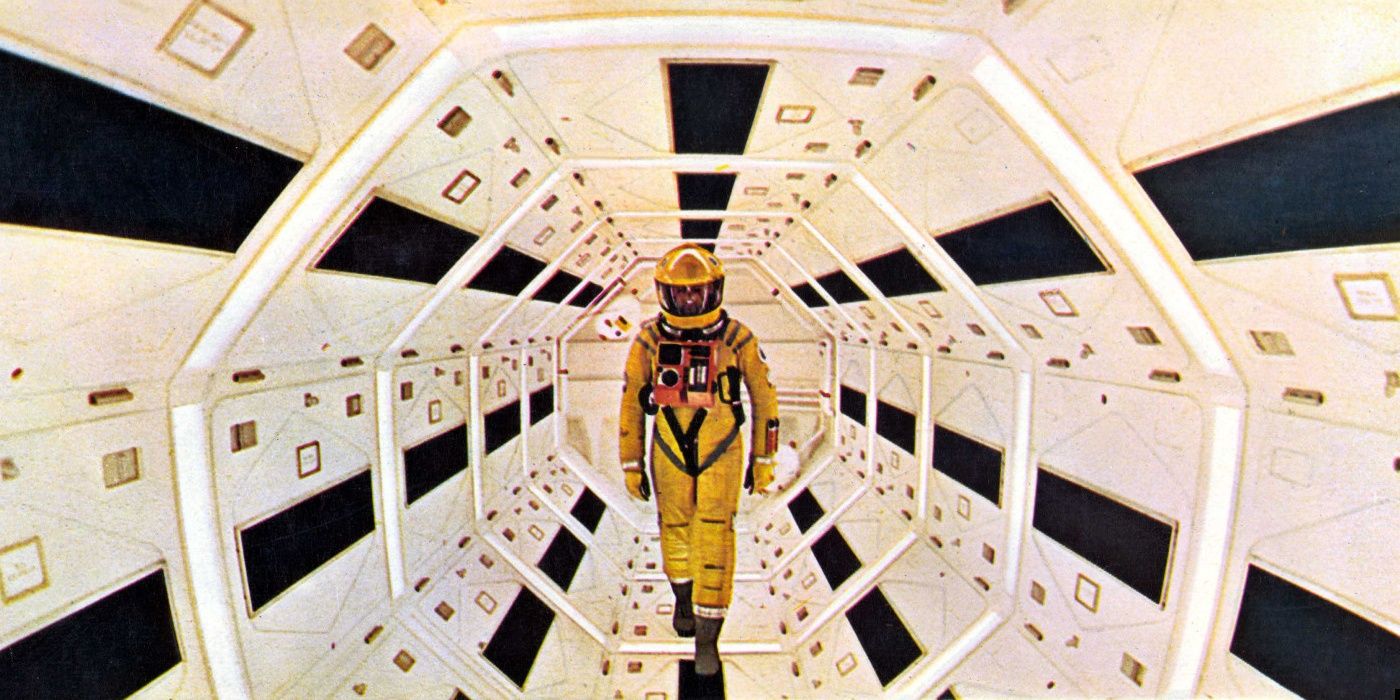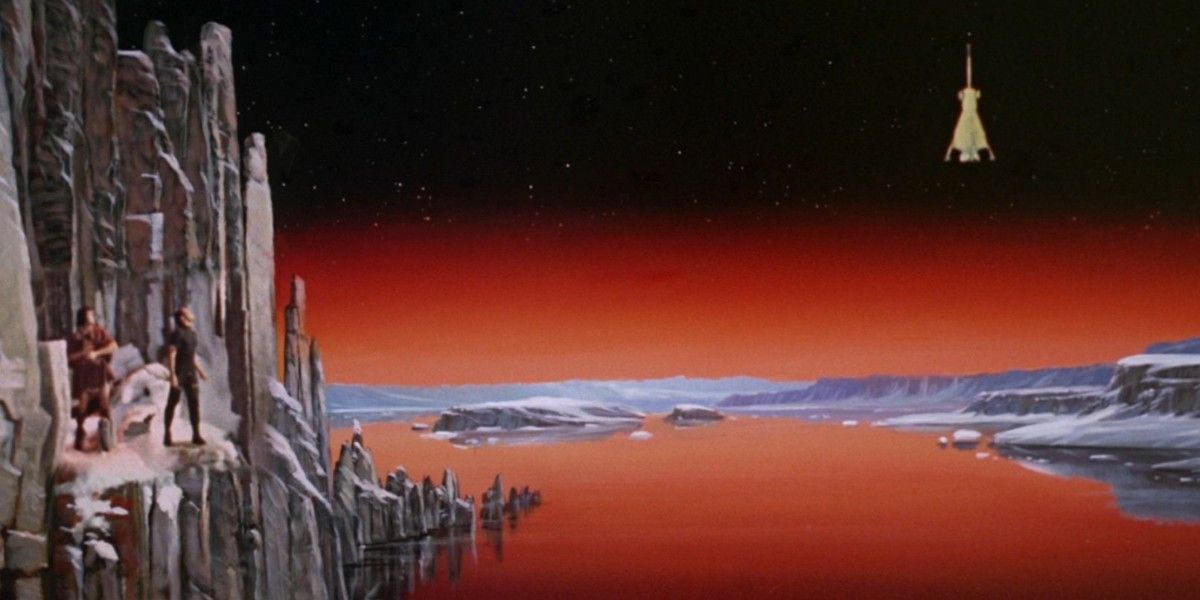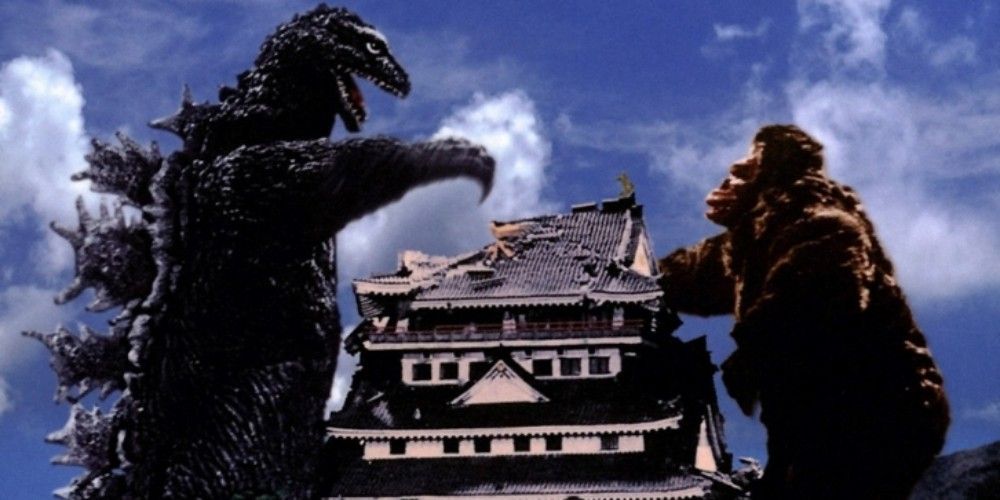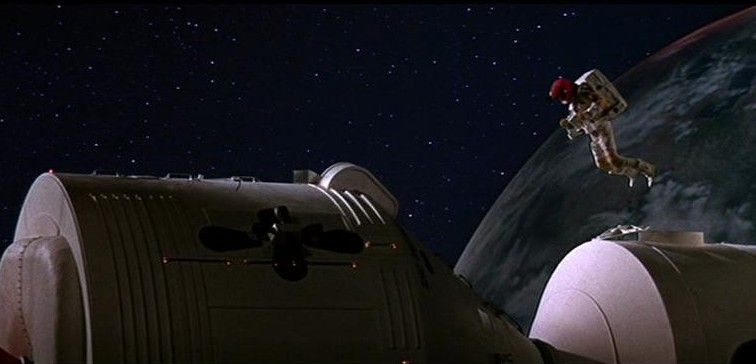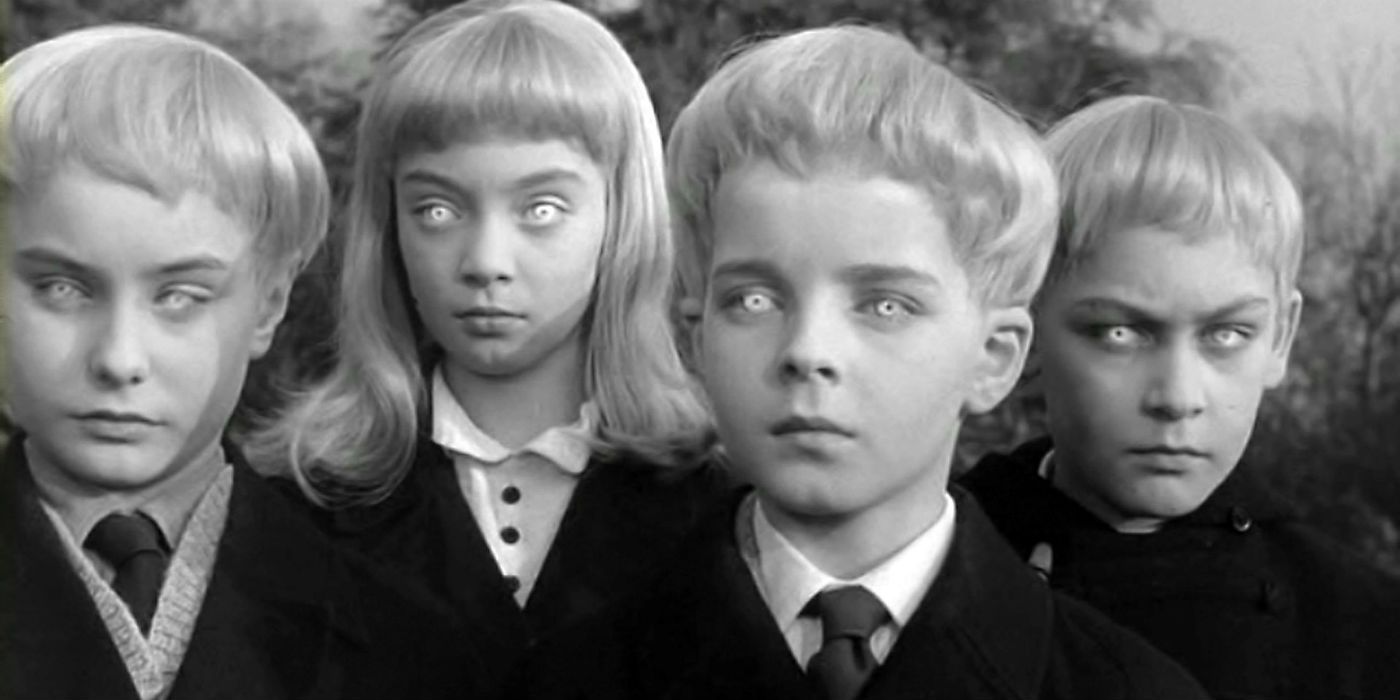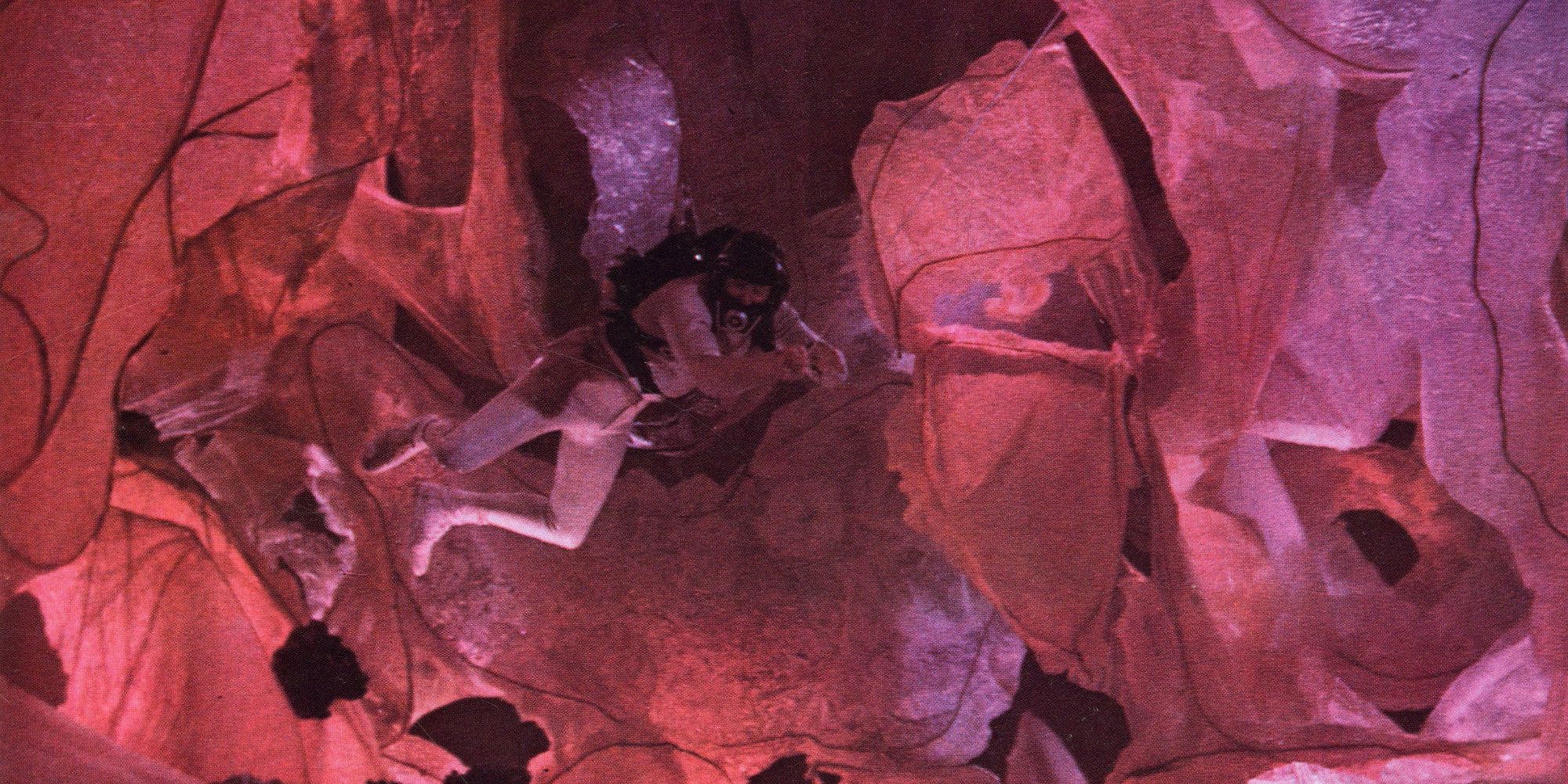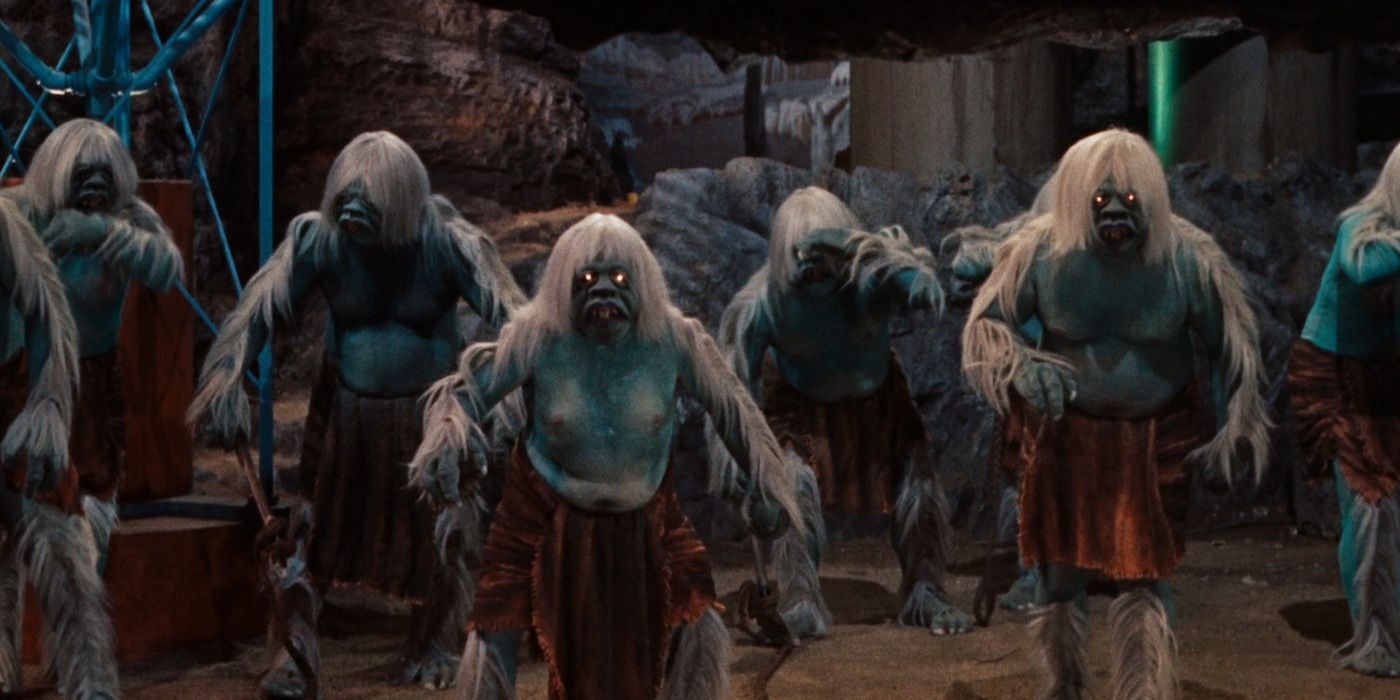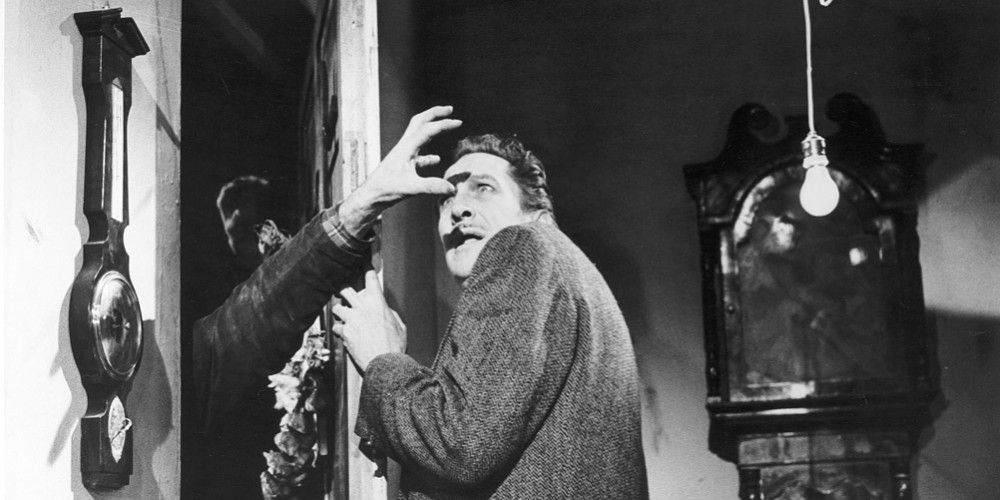Though science fiction in the '60s was primarily known for campier films like Barbarella and Zontar The Thing From Venus, the genre did produce a shocking amount of cutting edge cinema that is still as highly regarded today as it was then. While there were still films like The Lost World using giant iguanas as stand-ins for dinosaurs, there were also sophisticated benchmarks like 2001: A Space Odyssey creating visuals that audiences had never seen before.
While most science fiction films simply transposed contemporary societal concepts into space a la The Jetsons, some films were actually showcasing new visions of the future unlike anything society could dream of. Innovations in NASA's space programs inspired films that were set in realistic space stations and space ships, rather than the gleaming chrome rocketships of the '50s. Here are 10 '60s sci-fi movies that are still mind-blowing today.
PLANET OF THE APES
Charleton Heston notably risked ridicule from his peers for appearing in Planet of the Apes, a sci-fi classic from '68 that was made at a time when science fiction was generally dismissed with mockery. He portrays one of three astronauts marooned on a planet inhabited by sentient apes who have made humans into slaves.
Watching humans be the devalued species on a seemingly alien world, the film is full of themes that question humankind's superiority, and like 2001: A Space Odyssey which came out the same year, it is profoundly humbling. It constitutes the birth of the "hard sci-fi" niche, which today is one of the most prominent.
2001: A SPACE ODYSSEY
It's hard to believe that a film from the same decade as Santa Claus Conquers the Martians can seem so relevant even now, but auteur Stanley Kubrick understood the necessity of divorcing 2001: A Space Odyssey from its campier peers by pushing a bold vision of the future.
When Dr. David Bowman and several astronauts undertake a mystery mission, they're thwarted by the ship's supercomputer, HAL. The tense showdown between man and machine is buoyed by hypnotic visuals that manage to seem dateless.
ROBINSON CRUSOE ON MARS
The literary classic "Robinson Crusoe" is given the sci-fi treatment with Robinson Crusoe on Mars, a tour-de-force film from director Byron Haskin. Ten years earlier, Haskin had achieved great success with The War of the Worlds, and was a respectable artist in sci-fi.
After a difficult mission in space, Commander Kit Draper crash lands on Mars, where he must use his wits and survival skills to survive on the barren world. Filmed in California's Death Valley, cutting edge visual effects and camera techniques were used to bring Mars to life in a fantastical way today's scientists now know cannot exist.
KING KONG VS. GODZILLA
King Kong vs. Godzilla heralds the first time that both behemoths appear onscreen together in color and widescreen, showcasing the bombastic nature of the kaiju film and instantly paving the way for all future monster films of its magnitude in the sci-fi genre.
When two operatives of a pharmaceutical company kidnap and transport the ferocious King Kong back to Japan, they have no idea that an American submarine has accidentally also awakened Godzilla. The fight between the two at the base of Mount Fuji ensured that the film would be the most successful of all the Godzilla films.
MAROONED
Directed by John Sturges, known for some of the most famous Westerns of all time including The Magnificent Seven and Gunfight at the O.K. Corral, as well as the thriller The Great Escape, Marooned showcased his first foray into science fiction.
The film chronicles an Apollo spacecraft as it returns from a mission to Earth, running out of both fuel and oxygen along the way, marooning its crew in space. All normal procedures are bypassed as NASA tries desperately to get a rescue craft to the crew in time. It provided the inspiration for the 2013 film of a similar theme, Gravity.
STEREO
David Cronenberg, who would go on to do several well-regarded films in the sci-fi genre including Scanners, The Brood, and The Fly, cut his teeth on Stereo in 1969. The black and white film is his first, and explores themes of telepathy, sexuality, and transformation which would frequently reoccur over his life as a director.
A young man arrives at the Canadian Academy of Erotic Enquiry, where Dr. Luther Stringfellow supervises sexual exploration that results in the development of telepathic abilities. He hopes the polymorphous sexual bonds will make the "family unit" obsolete. Eventually, the subjects cannot be controlled, but separating them results in suicide and the creation of secondary personalities.
VILLAGE OF THE DAMNED
A chilling sci-fi film that incorporates elements of horror, Village of the Damned is a taut thriller that pushed the envelope when it premiered in 1960 by making its antagonists children. Little platinum-haired angels willed grown men to shoot themselves in the head, drive their cars into walls, and create all manner of mayhem.
The town of Midwich experiences a strange phenomenon when all of its inhabitants suddenly become unconscious for four hours. When they awaken, they discover all the women of child-bearing age are pregnant. They give birth to eerie children capable of telepathy, who may be controlled by extraterrestrials.
FANTASTIC VOYAGE
Fantastic Voyage stands apart from other films involving miniaturization due to its outlandish, kaleidoscopic visuals that are as bizarre today as they were then. The 1966 sci-fi adventure inspired the film Innerspace in 1987.
When a scientist discovers how to shrink matter indefinitely, he's smuggled from behind the Iron Curtain of the Soviet Union to America, but an attack on his life leaves him with a blood clot moving to his brain. Operatives in a submarine are therefore miniaturized and injected into his bloodstream to try to remove the clot before it kills him.
THE TIME MACHINE
Based on the literary classic of the same name by H.G. Wells, The Time Machine combines a daring adventure yarn with compelling practical effects, which in 1960 were some of the most sophisticated up until that point. It follows an inventor in Victorian England who builds a time machine and uses it to travel to different periods in the future.
Each trip gets him incrementally further in time until he's traveled 1,000 years from 1895, in which the world is a dystopian landscape inhabited by the peaceful Eloi and the Morlock who feed on them. He helps the Eloi revolt against their oppressors and after a series of adventures returns to 1890 with fantastic stories to tell.
THE LAST MAN ON EARTH
The Last Man On Earth is the first filmed version of the 1954 novel I Am Legend, which was recently made into a successful sci-fi horror film starring Will Smith. The Last Man On Earth stars horror icon Vincent Price as Dr. Robert Morgan who wakes up everyday to hunt vampires as the last known survivor of a plague apocalypse.
With the whole world turned into vampires, Dr. Morgan must conserve his resources and kill as many vampires as he can. Immune to the plague, he tries to maintain companionship with first a dog, and then another survivor named Ruth, but that is the end of any happiness he'll experience for the remainder of the film.

